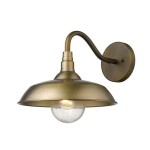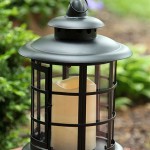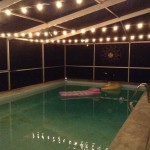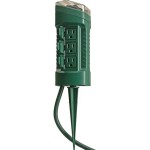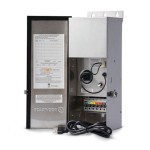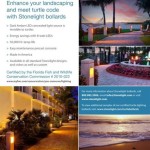Best Color for Outdoor Light Bulbs: Illumination and Ambiance
Selecting the appropriate color for outdoor light bulbs is a multifaceted decision, influencing not only the aesthetic appeal of a property but also its security, functionality, and even its impact on the surrounding environment. The "color" of a light bulb, in this context, refers to its correlated color temperature (CCT), measured in Kelvins (K). This measurement describes the relative warmth or coolness of the light emitted. Different applications call for different color temperatures, and understanding these nuances is crucial for effective outdoor lighting.
The impact of light color extends beyond mere illumination. It affects how colors are perceived, influences mood, and can even deter pests. A well-considered choice of light color enhances curb appeal, improves safety by increasing visibility, and creates a welcoming atmosphere. Conversely, an inappropriate selection can be jarring, ineffective, or even contribute to light pollution.
The available range of outdoor light bulbs encompasses a spectrum of color temperatures, each with its own distinct characteristics. Warm white light, typically ranging from 2700K to 3000K, emits a soft, yellowish glow reminiscent of incandescent lighting. This color temperature is often favored for creating a cozy and inviting ambiance. On the other end of the spectrum, cool white light, ranging from 4000K to 5000K, produces a brighter, more energetic light resembling daylight. This color is generally preferred for areas requiring high visibility and clarity.
Considerations for Choosing Outdoor Light Bulb Colors
Several factors warrant careful consideration when selecting the optimal color for outdoor light bulbs. These factors include the intended purpose of the lighting, the architectural style of the property, the surrounding environment, and the potential impact on nocturnal wildlife.
The primary purpose of the lighting is paramount. Security lighting, for instance, requires a brighter, cooler light that maximizes visibility and deters potential intruders. Path lighting, on the other hand, benefits from a softer, warmer light that guides the way without being overly harsh. Accent lighting, designed to highlight specific architectural features or landscaping elements, can utilize a range of color temperatures to achieve the desired effect.
The architectural style of a property plays a significant role in determining the most appropriate light color. Traditional homes often benefit from warmer light, which complements their classic design and creates a welcoming ambiance. Modern homes, with their clean lines and minimalist aesthetic, may be better suited to cooler light, which enhances their contemporary appeal. The color of the building material also influences the perceived effect of the light. For instance, warmer tones of brick or siding are often complemented by warmer light, while cooler tones of stucco or metal may benefit from cooler light.
The surrounding environment is another crucial consideration. In suburban and urban areas, where ambient light levels are already relatively high, warmer light may be more appropriate to avoid contributing to light pollution. In rural areas, where ambient light levels are lower, brighter, cooler light may be necessary to provide adequate visibility. It is also important to consider the presence of trees and other foliage, as they can absorb light and reduce its effectiveness.
The potential impact on nocturnal wildlife should also be taken into account. Bright, white light can disrupt the natural behavior of nocturnal animals, interfering with their feeding, mating, and navigation. Using warmer light, shielded fixtures, and motion sensors can help minimize the impact on wildlife while still providing adequate outdoor lighting.
Specific Applications and Recommended Color Temperatures
Different outdoor lighting applications benefit from specific color temperatures, optimized for their intended purpose. Understanding these recommendations can guide the selection process and ensure optimal results.
For security lighting, a color temperature of 4000K to 5000K is generally recommended. This cool white light provides excellent visibility and clarity, making it easier to identify potential threats. It is also more likely to deter intruders, as it creates a sense of heightened awareness. Fixtures should be strategically placed to illuminate doorways, windows, and other vulnerable areas.
For path lighting, a color temperature of 2700K to 3000K is often preferred. This warm white light creates a soft, inviting glow that guides the way without being overly harsh. It also complements the natural colors of landscaping and creates a more relaxed atmosphere. Path lights should be spaced evenly along the path to provide consistent illumination.
For porch lighting, a color temperature of 3000K to 3500K is a good compromise. This slightly warmer white light creates a welcoming ambiance while still providing adequate visibility. It is also less likely to attract insects than brighter, cooler light. Fixtures should be chosen to complement the architectural style of the home and provide ample illumination for entering and exiting the property.
For deck and patio lighting, a color temperature of 2700K to 3000K is generally recommended. This warm white light creates a cozy and inviting atmosphere, perfect for relaxing and entertaining. It also helps to minimize glare and create a more comfortable environment. String lights, post lights, and recessed lighting are all popular choices for deck and patio illumination.
For landscape lighting, the optimal color temperature depends on the specific features being highlighted. Warmer light can be used to accentuate the natural colors of trees and shrubs, while cooler light can be used to create dramatic effects on architectural elements or water features. Accent lights should be carefully positioned to avoid creating glare or light pollution.
Technological Advancements and Color Control
Advancements in lighting technology have introduced new options for controlling the color of outdoor light bulbs. Smart bulbs, for instance, allow users to adjust the color temperature and brightness of their lights remotely via a smartphone app. This provides greater flexibility and customization than traditional light bulbs.
Smart bulbs can be programmed to change color temperature based on the time of day or other factors. For example, they can be set to emit a warm white light in the evening and a cool white light in the morning. This can help to regulate circadian rhythms and improve sleep quality.
Some smart bulbs also offer color-changing capabilities, allowing users to select from a wide range of colors beyond the standard white spectrum. This can be used to create festive lighting displays or to add a touch of personality to outdoor spaces. However, it is important to use color-changing lights responsibly and avoid creating excessive light pollution.
In addition to smart bulbs, there are also LED fixtures that offer adjustable color temperature. These fixtures typically have a built-in control panel that allows users to select from a range of preset color temperatures. This provides a convenient way to customize the lighting without having to replace the bulb.
The use of dimmers can also affect the color temperature of LED bulbs. As the light is dimmed, the color temperature tends to become warmer, creating a more mellow and inviting ambiance. This can be a useful feature for creating different moods in outdoor spaces.
Selecting the right color for outdoor light bulbs is a balancing act between aesthetic preferences, functional requirements, and environmental considerations. By understanding the characteristics of different color temperatures and considering the specific needs of each application, property owners can create outdoor lighting that is both beautiful and effective.

Choose The Best Color Temperature For Your Outdoor Lighting Knowledge Base Super Bright Leds

What Is The Best Led Color Temperature For Outdoor Lighting

Best Color Temperature For Outdoor Lighting Enhanced

Color Temperature Your Guide To Outdoor Lighting

Best Color Temperature For Outdoor Lighting Enhanced

Choose The Best Color Temperature For Your Outdoor Lighting Knowledge Base Super Bright Leds

Best Led Color Temperature For Outdoor Lighting Georgia Lightscapes Blog

Color Tones In Outdoor Lights Northwest Lighting

Color Temperature Your Guide To Outdoor Lighting

What Is The Best Led Color Temperature For Outdoor Lighting
Related Posts

